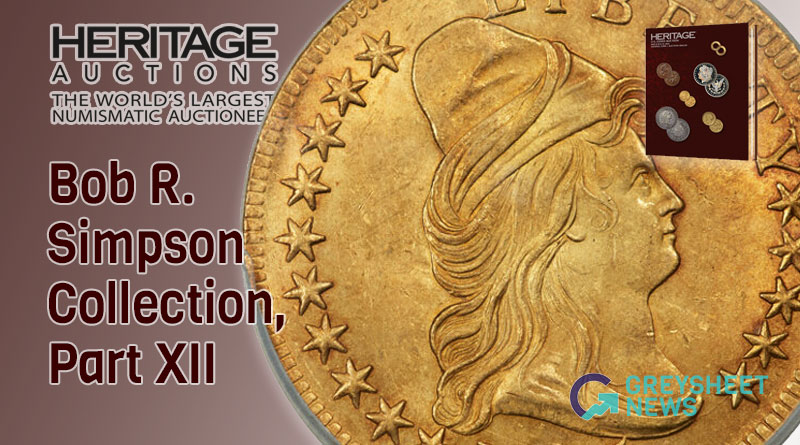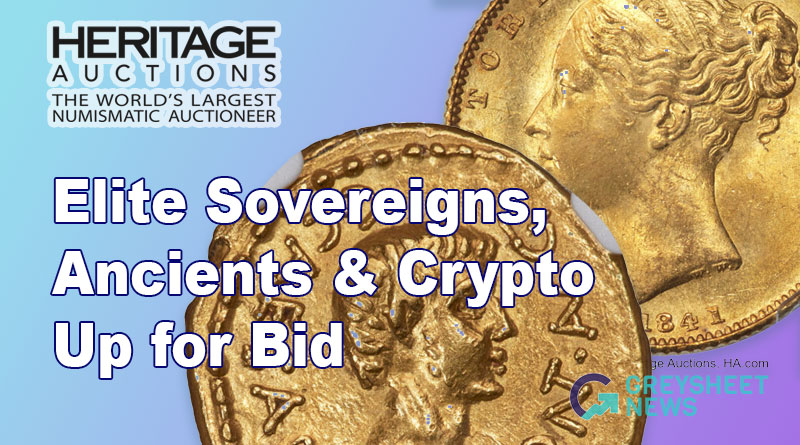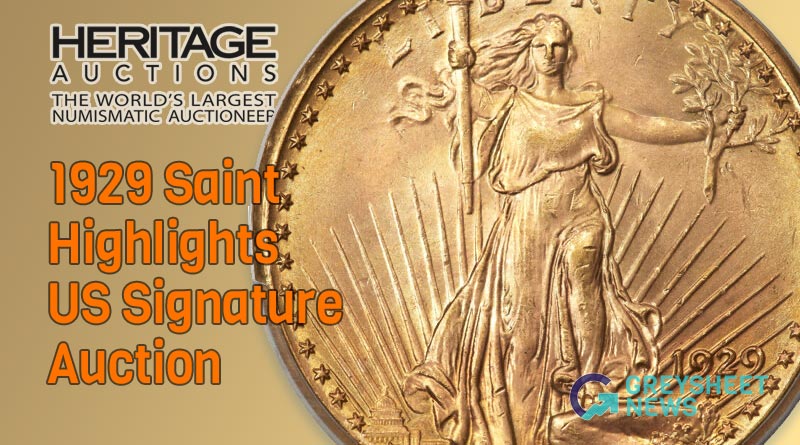Early American Rarities Come to Market in June
Heritage Auctions will be offering two amazing early American coins from 1792 that would be the jewel of any museum collection or collector's cabinet. Both pieces help to tell the story of the very first official US coinage and have close connections to the Founding Fathers.
Heritage Auctions will be offering two amazing early American coins from 1792 that would be the jewel of any museum collection or collector's cabinet. Both pieces help to tell the story of the very first official US coinage and have close connections to the Founding Fathers.
The first of these two very special pieces is the Judd-10 1792 Pattern Disme in Copper, graded PCGS SP25. It is one of only 19 examples known. All 1792 patterns are rare and historically important issues that laid the foundation of the monetary system of the United States, the most efficient and successful monetary system in the history of the world. The 1792 disme (a French term, soon Americanized to dime) was an especially important denomination, as it established the decimal base of the system, freeing U.S. currency from the cumbersome calculations of the old English system of 12 cents to the shilling, 20 shillings to the pound, etc. The dismes were struck in silver (Judd-9, three examples known), copper, with a plain edge (Judd-11, three examples known), and copper, with a reeded edge (Judd-10, 19 specimens traced). The SP25 example offered here is number 13 in the Judd-10 census compiled by Pete Smith, Joel Orosz, and Len Augsburger in their seminal work, 1792: Birth of a Nation's Coinage. Three Judd-10 specimens are included in institutional collections at the Smithsonian Institution, the Durham Museum, and Independence National Historic Park.
Next is a piece that has survived in virtually perfect condition over the last 225+ years: a 1792 Judd-7 Half Disme graded NGC MS63. Despite significant conjecture about these coins' history and their connection to George and Martha Washington, their true story was discovered fairly recently by researchers. Authors Joel Orosz and Carl Herkowitz wrote a detailed article, "The Fabled 1792 Half Dimes," that brought to light the various aspects of the production of these first official United States coins. The authors discovered an obscure reference to a tipped-in note that was discovered in a European coin book in 1943 and the contents of the note were subsequently published in The Numismatist. A subsequent misinterpretation of the author of the note by Charles McSorley, Jr. led to one of the major pieces of misinformation regarding the 1792 half dismes. McSorley misidentified the author of the note as officer and refiner in the Mint, Jonas R. McClintock. The signature was faded and only read J--Mc--. Orosz and Herkowitz identified the actual author of the note as John McAllister, Jr., a fascinating individual who was a close friend of Adam Eckfeldt, who was present at the striking of the 1792 half dismes. The actual content of the tipped-in note reads:
"In conversation with Mr. Adam Eckfeldt (Apr 9, 1844) at the Mint, he informed me that the Half Dismes above described, were struck, expressly for Gen. Washington, to the extent of One Hundred Dollars, which sum he deposited in Bullion or Coin, for the purpose. Mr. E. thinks that Gen. W. distributed them as presents. Some were sent to Europe, but the greater number, he believes, were given to friends of Gen. W. in Virginia. No more of them were ever coined. They were never designed as Currency. The Mint was not, at the time, fully ready for being put into operation. The Coining Machinery was in the cellar of Mr. Harper, saw maker, at the corner of Cherry and 6th Sts, at which place these pieces were struck."
As noted above, numerous half dismes were handed out as favors by President George Washington, while others were shipped to Europe. This particular piece must have been highly prized by its owner, as it is in essentially the same condition as when it left John Harper's saw shop 229 years ago. The only difference is the addition of multiple layers of gray, blue, and golden toning over each side. This NGC MS63 example is one of the finest pieces known of this historic issue.
Learn more about these wonderful pieces of history here:

Download the Greysheet app for access to pricing, news, events and your subscriptions.
Subscribe Now.

Subscribe to Monthly Greysheet for the industry's most respected pricing and to read more articles just like this.
Source: Heritage Auctions











